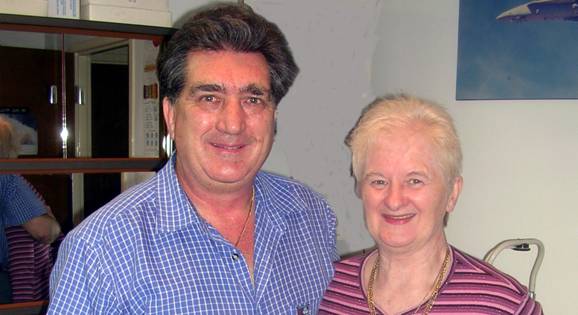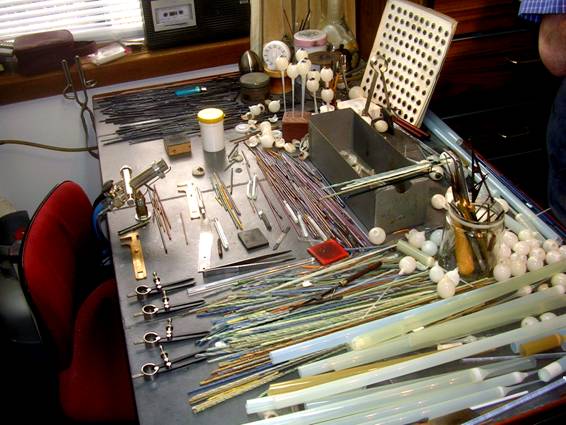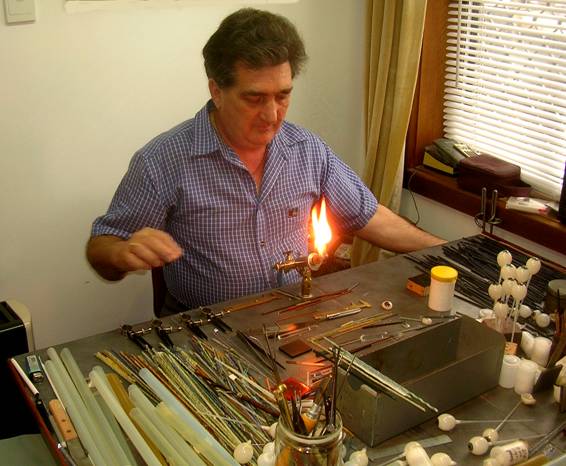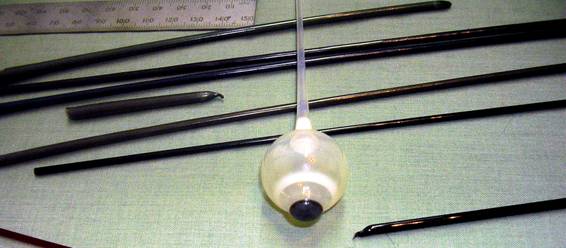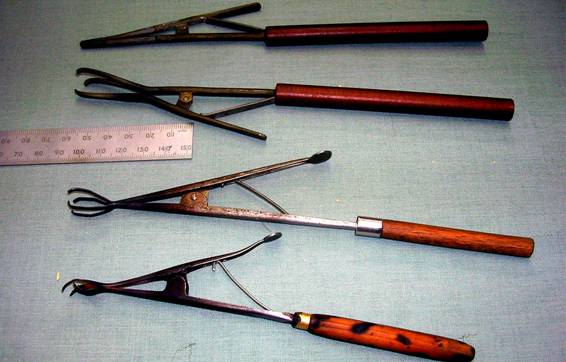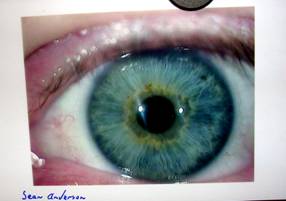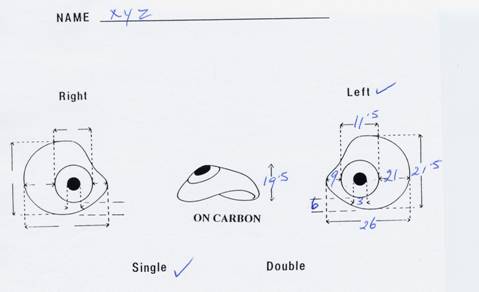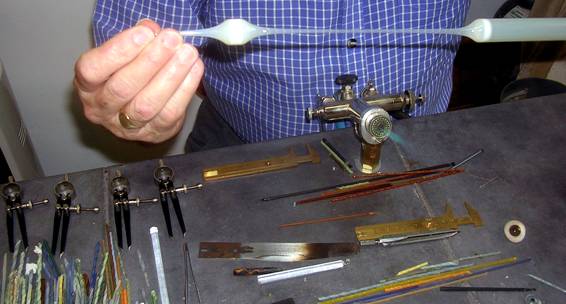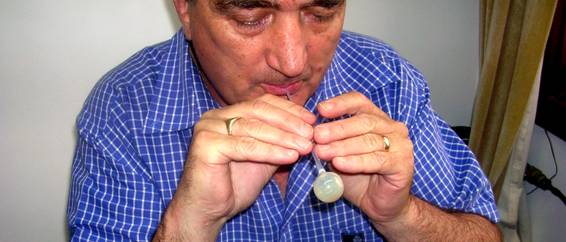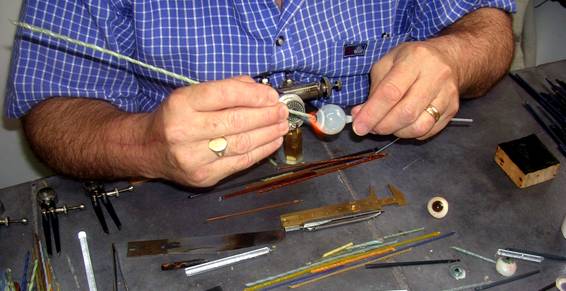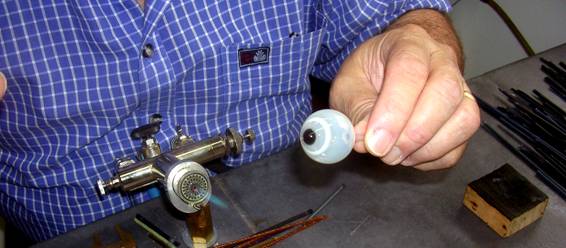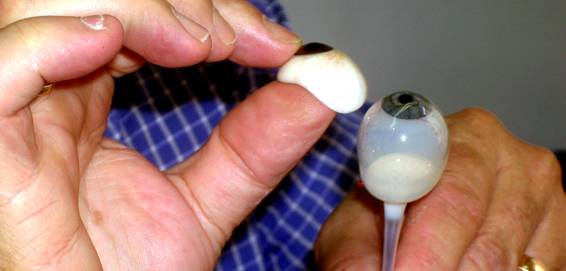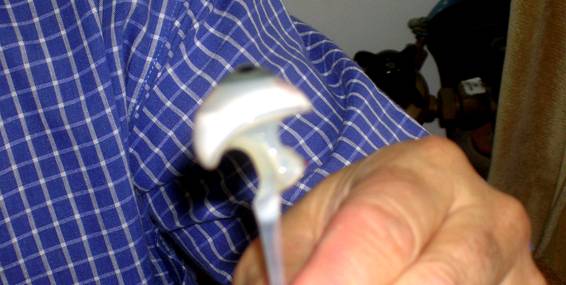
South Australian Medical Heritage Society Inc
Website for the Virtual Museum
Home
Coming meetings
Past meetings
About the Society
Main Galleries
Medicine
Surgery
Anaesthesia
X-rays
Hospitals,other organisations
Individuals of note
Small Galleries
Ethnic medicine
- Aboriginal
- Chinese
- Mediterran
Glass-eye history & manufacture
Photographs, text, materials, and process
kindly provided with the permission of Paul McLarinThere is evidence that both Egyptians and Romans decorated their dead and statues with artificial eyes made from bronze, gems, or silver. Ambrose Pare (1510-1590) described prostheses made from precious metals and worn in front of an atrophic eye. Venetian glass blowers made some of the first glass eyes. Later the French and Germans entered the field, usually as family groups and the latter brought the art to the USA .
The early Australian glass eyes were made in Adelaide by Mr. Scheiffer a German who arrived here in the 1930s. While at present many eye prostheses are made from Methacrylate resin, the occurrence of allergies and other socket problems necessitate the continued use of glass as an alternative. Currently this work is carried out by Paul McClarin, the only current expert in Australia . As a 2003 Churchill Scholar he worked with Mr. Frank Muller-Uri in Lauscha, but also visited several other centres there. The following photographs document and illustrate the materials and stages in the making of a glass eye.
Paul McClarin and his wife Margaret
Part of a collection of prostheses made by Mr.Scheiffer in the last century
Work bench and butane burner
Paul McLarin at the work bench with butane burner lit
Steps in making a glass eye
Partially made eye and coloured glass rods the short thick rod is black to stain the pupil
Instruments used to grasp the prosthesis in the final stages
Photograph of good eye for colour match
Dimension chart to “size” the artificial eye
First stage of shaping the eye ball from a German glass tube
Early eyeball on the end of the hollow glass tube. The size can be changed by altering the pressure in the globe
Application of colour to the iris
Creating the pupil
A finished prosthesis next to “ work in progress”. The hollow back is created by using negative pressure
An early stage in hollowing out the back
Measuring instruments to check on the size of the prosthesis. Also coloured glass rods
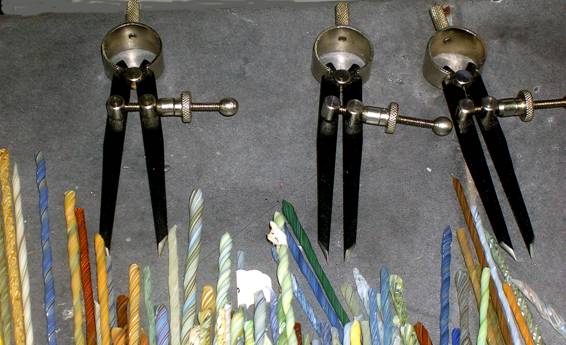
Nearing the final stage. A flame is used to smooth the posterior aspect of the eye
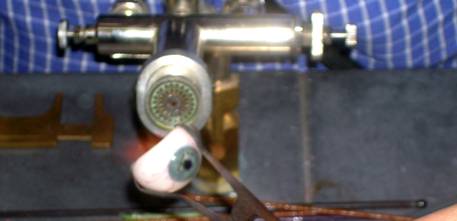
-o0o-
